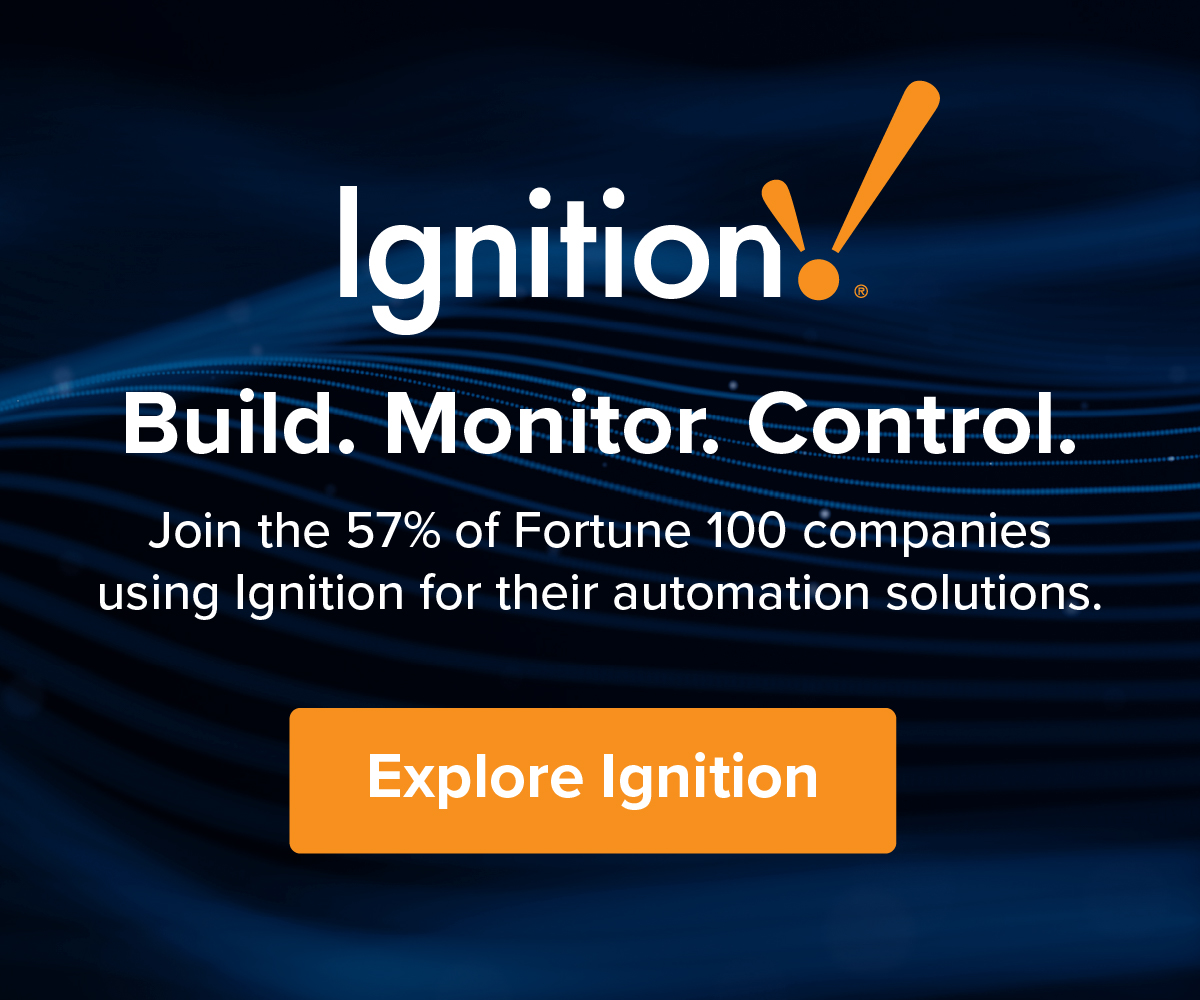by Gary Mintchell | Jun 25, 2021 | Commentary, Manufacturing IT, News, Operations Management
Funny how things go. I recently sat in my favorite local direct trade coffee house, maybe under the influence of caffeine, contemplating industrial software and MES market. The market is ripe for further consolidation, I thought. I rested in that thought for a while, then let it go. Later I was contemplating Rockwell Automation’s software situation recognizing its move partnering with PTC ThingWorx for IoT, but how it probably needed to make a move to build momentum for its manufacturing software (MES).
This morning I do a quick scan of LinkedIn and spot this press release. This is a good move. I had some in-depth interviews with Plex within the past couple of years. Good company and good idea, but I didn’t see how it was ever going to really grow.
I think Rockwell’s new software executive team should do well with this acquisition. (And as an independent blogger/analyst guy, I’m not paid to say that.)
Rockwell Automation, the world’s largest company dedicated to industrial automation and digital transformation, and Plex Systems, the leading cloud-native smart manufacturing platform operating at scale, today announced that Rockwell has entered into an agreement to acquire Plex for $2.22 billion in cash.
Plex offers the only single-instance, multi-tenant SaaS manufacturing platform operating at scale, including advanced manufacturing execution systems, quality, and supply chain management capabilities. It has over 700 customers and manages more than 8 billion transactions per day. Plex’s software capabilities will be further differentiated by Rockwell’s global market access, complementary industry expertise, and ability to turn real-time data into actionable insights.
“This acquisition will accelerate our strategy to bring the Connected Enterprise to life, driving faster time to value for our customers as they increasingly adopt cloud solutions to improve resilience, agility, and sustainability in their operations,” said Blake Moret, Chairman and CEO of Rockwell Automation. “Combining Plex’s cutting-edge cloud technology with Rockwell’s existing software portfolio and domain expertise will add customer value and create more ways to win. The acquisition will also accelerate our software revenue growth and strengthen our annual recurring revenue streams.”
A growing dilemma for manufacturers is the urgent need to increase production and improve resilience, while driving efficiency and compliance. Companies are increasingly seeking to upgrade their production systems with modern, cloud-based manufacturing execution systems that are easy to implement, use, and maintain. Plex’s platform helps customers to connect, automate, track, and analyze their operations and connected supply chains.
“Rockwell believes in the power of data and technology to transform manufacturing and industrial operations,” said Brian Shepherd, senior vice president, Software and Control, for Rockwell Automation. “Together with the advanced asset maintenance and management capabilities provided by our recent Fiix acquisition, Rockwell will have a strong portfolio of cloud-native solutions for our customers’ production systems upon completion of the Plex acquisition.”
“Plex has always been more than a company,” said Bill Berutti, CEO of Plex. “We have been a leader in the movement to smart manufacturing and a trusted partner to more than 700 manufacturing companies around the globe. Joining forces with Rockwell is great for our customers, our partners, and our employees as we move to expand our reach and impact and accelerate our mission to bring manufacturing to the cloud.”
Plex will be reported as part of Rockwell’s Software and Control operating segment which provides leading hardware and software offerings for the design, operation, and maintenance of production automation and management systems. As a part of the acquisition, Rockwell will welcome more than 500 highly engaged new employees.
The acquisition will be financed with a combination of cash and short-term and long-term debt. Subject to customary closing conditions and completion of regulatory review, the acquisition is expected to close in Rockwell’s fiscal fourth quarter.
by Gary Mintchell | Jun 23, 2021 | Automation, Manufacturing IT, Operations Management, Process Control
Three of the eleven hours I spent on a variety of video platforms Monday and Tuesday were “at” Honeywell User Group, better known as HUG. I appreciate the virtual conference since there are a minimum of three places for me to attend this week. If they were all physical locations, I would never have made it.
This HUG was more interesting than I remember from the past couple of years. Honeywell Process Solutions (HPS) has, well, er, solved several hanging issues that were critical to its future success. The big one is moving with software-defined and decoupling hardware and software. This is major goal of the Open Process Automation Forum and of major Honeywell customer, ExxonMobil. It has also opened an innovative migration path for its legacy TDC systems to its latest Experion C300 systems avoiding the dreaded rip-and-replace. I was pretty impressed with the progress since last year. I don’t hear from HPS on a regular basis, so this was welcome news.
There are two press releases below. The first discusses Operator Advisor, part of its plant-wide optimization strategy.
Jason Urso, HPS CTO, discussed the Autonomous Operations Maturity Model in his keynote and a later session with media. This model contains five levels all of which find HPS hard at work building out. Following is a brief outline.
- Level 1—automation optimization. Introduced Electronic Work Instructions and Forge Plant-wide optimizer.
- Level 2—Intelligent Operations. Here, Urso discussed expanding use of digital twins for modeling and HALO automated intelligence (see below).
- Level 3—Remote Operations. For example, well head, pipeline, offshore, and mining operations. Urso discussed project execution support services leading to fully remote operations.
- Level 4—Resilient Operations. Experion HIVE I/O increasing in useability and flexibility, decouples hardware and software eliminating concern with end-of-life issues for equipment.
- Level 5—Autonomous Operations. HPS have introduced Energy Control System with market APIs.
Overall, an informative couple of days devoted to Honeywell Process Solutions.
Operator Advisor Added to HALO Suite
Honeywell announced the addition of Operator Advisor to its Experion Highly Augmented Lookahead Operations (HALO) suite.
This software solution enables plant owners to objectively measure gaps and drive operator effectiveness to the next level. This market-first solution presents users – including oil and gas, chemical, refining and petrochemical organizations – with a consolidated scorecard of enterprise automation utilization and recommended steps to address performance-related gaps.
Honeywell’s solution uses machine learning-powered analytics, a type of artificial intelligence, to gather insights from enterprise data sources such as distributed control systems and funnel those insights into dashboards. These dashboards can provide operations managers and supervisors with a clear and complete view of operator performance and improvement opportunities.
By understanding how operator actions, inactions and workload levels contribute to optimal production, organizations can develop targeted training programs, make strides toward autonomous operations and build process resilience – all of which can help them better compete in the digital age.
“According to the Abnormal Situation Management Consortium, 40% to 70% of industrial accidents are linked to human error,” said Pramesh Maheshwari, vice president and general manager, Lifecycle Solutions and Services, Honeywell Process Solutions. “This underscores the importance of deploying an enterprise-wide competency program that empowers organizations and workers through use of advanced technologies like machine learning to improve plant performance, uptime, reliability and safety.”
As part of Honeywell’s Workforce Excellence portfolio, HALO Operator Advisor is a timely response to several industry trends, including the global desire for post-COVID-19 preparedness and resilience, growing operational complexity, the aging industrial workforce and the urgent need to upskill next-generation recruits.
Honeywell data reveals the transformational impact HALO Operator Advisor can have on plant operations. Potential benefits include the reduction of 75% of incidents and human errors, leading to the recovery of $1.5 million annually per plant of production loss due to worker performance; a $2 million annual reduction in operational costs by optimizing worker productivity and training and advancing toward full autonomous plant operation; a $1.3 million annual savings in headcount through optimized production; and a $1 million savings in annual maintenance costs through improved equipment reliability.
HALO Operator Advisor will be available in October 2021. For more information, visit: https://www.honeywellprocess.com and check the HALO Operator Advisor Service Note.
Cybersecurity Research Reports Increase In USB Threats
- Report finds that 79% of cyber threats originating from removable media could critically impact operational technology (OT) environments
- 2021 Honeywell USB Threat Report finds 37% of all cybersecurity threats were designed to use removable media – nearly double last year’s findings
According to a report released today by Honeywell, USB-based threats that can severely impact business operations increased significantly during a disruptive year when the usage of removable media and network connectivity also grew.
Data from the 2021 Honeywell Industrial USB Threat Report indicates that 37% of threats were specifically designed to utilize removable media, which almost doubled from 19% in the 2020 report. The research also highlights that 79% of cyber threats originating from USB devices or removable media could lead to a critical business disruption in the operational technology (OT) environment. At the same time, there was a 30% increase in the use of USB devices in production facilities last year, highlighting the growing dependence on removable media.
The report was based on aggregated cybersecurity threat data from hundreds of industrial facilities globally during a 12-month period. Along with USB attacks, research shows a growing number of cyber threats including remote access, Trojans and content-based malware have the potential to cause severe disruption to industrial infrastructure.
“USB-borne malware was a serious and expanding business risk in 2020, with clear indications that removable media has become part of the playbook used by attackers, including those that employ ransomware,” said Eric Knapp, engineering fellow and director of cybersecurity research for Honeywell Connected Enterprise. “Because USB-borne cyber intrusions have become so effective, organizations must adopt a formal program that addresses removable media and protects against intrusions to avoid potentially costly downtime.”
Many industrial and OT systems are air-gapped or cut off from the internet to protect them from attacks. Intruders are using removable media and USB devices as an initial attack vector to penetrate networks and open them up to major attacks. Knapp says hackers are loading more advanced malware on plug-in devices to directly harm their intended targets through sophisticated coding that can create backdoors to establish remote access. Hackers with remote access can then command and control the targeted systems.
The 2021 report includes data from Honeywell’s Secure Media Exchange (SMX) technology, which is designed to scan and control USB drives and removable media. To reduce the risk of USB-related threats, Honeywell recommends that organizations utilize several layers of OT cybersecurity software products and services such as Honeywell’s Secure Media Exchange (SMX), the Honeywell Forge Cybersecurity Suite, people training and process changes.
Honeywell’s Secure Media Exchange (SMX) provides advanced threat detection for critical infrastructure by monitoring, better protecting and logging use of removable media throughout industrial facilities. The Honeywell Forge Cybersecurity Suite can monitor for vulnerabilities such as open ports or the presence of USB security controls to strengthen endpoint and network security, while also ensuring better cybersecurity compliance.Read the full report here and visit Honeywell Forgeersecurity.
by Gary Mintchell | Jun 23, 2021 | Data Management, Enterprise IT, Internet of Things, Manufacturing IT, Operations Management
These IT cloud services are penetrating ever more deeply into industrial and manufacturing applications. I’m beginning to wonder where the trend is going for traditional industrial suppliers combining AWS (and Google Cloud and Azure) with control becoming more and more a commodity. What sort of business shake-ups lie in store for us? At any rate, here is news from a company called Element Analytics, which bills itself as “a leading software provider in IT/OT data management”. I’ve written about this company a couple of times recently. It has started strongly.
Element, a leading software provider in IT/OT data management for industrial companies, announced June 9 a new offering featuring an API integration between its Element Unify product and AWS IoT SiteWise, a managed service from Amazon Web Services Inc. (AWS), that makes it easy to collect, store, organize, and monitor data from industrial equipment at scale. The API integration is designed to give customers the ability to centralize plant data model integration and metadata management, enabling data to be ingested into AWS services, including AWS IoT SiteWise and Amazon Simple Storage Service (S3) industrial data lake.
Available in AWS Marketplace, the Element Unify AWS IoT Sitewise API integration is designed to allow engineers and operators to monitor operations across facilities, quickly compute performance metrics, create applications that analyze industrial equipment data to prevent costly equipment issues, and reduce gaps in production.
“We are looking forward to bridging the on-premises data models we’ve built for systems like OSIsoft PI to AWS for equipment data monitoring using Element Unify,” said Philipp Frenzel, Head of Competence Center Digital Services at Covestro.
Element also announced its ISO 27001 certification proving both the security controls protect customer data and the Information Security Management System (ISMS) provide governance, risk management, and controls required for modern SaaS applications. Element Unify also supports AWS PrivateLink to provide an additional level of network security and control for customers.
“Our customers are looking for solutions that can help them improve equipment uptime, avoid revenue loss, cut O&M costs, and improve safety,” said Prabal Acharyya, Global Head of IoT Partners for Energy at AWS. “Now, the Industrial Machine Connectivity (IMC) on AWS initiative, along with Element Unify, makes possible a seamless API integration of both real-time and asset context OT data from multiple systems into an industrial data lake on AWS.”
Industrial customers need the ability to digitally transform to maximize productivity and asset availability, and lower costs in order to remain competitive. Element Unify, which aligns IT and operational technology (OT) around contextualized industrial IoT data, delivers key enterprise integration and governance capabilities to industrials. This provides them with rich insight, enabling smarter, more efficient operations. By integrating previously siloed and critical time-series metadata generated by sensors across industrial operations with established IT systems, such as Enterprise Asset Management, IT and OT teams can now easily work together using context data for their entire industrial IoT environment.
Though the API integration, AWS IoT SiteWise customers can now:
- Centralize plant data model integration and metadata management into a single contextual service for consumption by AWS IoT SiteWise.
- Ingest data directly into AWS services, including AWS IoT SiteWise and Amazon S3 data lake.
- Integrate and contextualize metadata from IT/OT sources in single-site, multi-site, and multi-instance deployments, and deploy the data model(s) to AWS IoT SiteWise.
- Enable metadata to be imported into AWS IoT SiteWise from the customers systems through Inductive Automation Ignition and PTC KEPServerEX to create context data.
- Keep both greenfield and brownfield AWS IoT SiteWise asset models and asset hierarchies updated as the Element Unify models adapt to changes in the underlying data.
- Close the gap between raw, siloed, and disorganized IT/OT data and enriched, contextualized, and structured data that can be easily paired with business intelligence (BI), analytical tools, and condition monitoring tools like AWS IoT SiteWise.
- Empower the user to build complex asset data models with ease.
- Build and deploy data models to AWS IoT SiteWise and keep them up to date with changes happening in source systems.
- Easily create the underlying data models to power AWS IoT SiteWise and many other analytical systems including Amazon SageMaker, Amazon QuickSight, and Amazon Lookout for Equipment.
“Operations data must be easy to use and understand in both the plant and in the boardroom. Industrial organizations who transform their plant data into context data for use in AWS IoT SiteWise, and other AWS services, will drive greater operational insights and achieve breakthrough business outcomes,” said Andy Bane, CEO of Element.
The Element Unify and AWS IoT SiteWise integration will be available to AWS IoT SiteWise customers in AWS Marketplace.
by Gary Mintchell | Jun 21, 2021 | Personal Development
Happy Monday. I am attending four virtual conferences this week. This morning begins with three previews of Hewlett Packard Enterprise Discover 2021. I will be busy with influencer events for several days. Later this afternoon I’ll attend the technology preview of the Honeywell User Group (HUG). I’ll probably attend a few sessions there, as well. I think there is also a Siemens roundtable event and a PTC Liveworx event.
In the meantime, I’ve just finished A Thousand Brains: A New Theory of Intelligence by Jeff Hawkins. I used his Palm Pilot in the early 90s when it first came out. Synced it with my Act customer database. It was cool. His previous book, also excellent, was On Intelligence.
Even though this is the famous holiday, Prime Day, I’m giving you a link to the book from Bookshop.org–a site that supports your local independent book seller.
This book is a fascinating look at the latest research and theories around the neocortex of the brain. Plus–a bonus feature where he looks at the state of AI. Since most of the software companies are touting their AI, I found this enlightening.
Recommended reading for sure.
by Gary Mintchell | Jun 18, 2021 | Automation, Networking, Security
Security of networks and compute platforms will continue to be news for quite some time. After all, Putin didn’t agree to terminate all hacking emanating from Russia (surprise). But according to my firewall statistics, I’m hacked from a large number of geographic sites, and I’m just a blog site! This news came to me. Typical of security news, there are superlatives and claims that I have not been able to verify. The gist is that there is an attempt to bring OT and IT together in a secure network.
Tenable.ot showcased in Deloitte’s Smart Factory at Wichita initiative, providing its industry-leading capabilities for securing today’s modern OT environments
Tenable Inc. the Cyber Exposure company, announced a strategic collaboration with Deloitte to accelerate and secure smart manufacturing across Fortune 500 environments. Tenable and Deloitte have developed and implemented industrial-grade security solutions to help organizations understand, manage, and reduce cyber risk in their manufacturing environments around the world.
According to a smart factory study from Deloitte and Manufacturers Alliance for Productivity and Innovation, eighty-six percent of manufacturers believe smart factories will be the main driver of competitiveness in the next five years. These modern environments represent a massive business opportunity, but they also contribute to an expansive and converged attack surface of legacy information technology (IT) and new operational technology (OT). Increasingly, boards of directors and executives consider OT security a top business priority and risk. As such, smart factories require strategic, risk-based vulnerability management to defend and secure mission- and safety-critical systems.
Deloitte’s ecosystem for smart manufacturing provides organizations with greater speed, scale and security over their digital transformation initiatives. By deploying Tenable.ot — the industry’s first unified solution for securing IT/OT environments — as part of a secure-by-design model, joint customers benefit from unmatched visibility and control over their converged industrial environments, with advanced threat detection and mitigation to identify weak points before an attack ever occurs.
“Make no mistake, industrial environments run the global economy. They build, power and protect the world around us. Ensuring these smart factories are secure by design is paramount,” said Renaud Deraison, co-founder and chief technology officer, Tenable. “Strategic cybersecurity must be foundational to all smart factory initiatives. Without it, you’re building on pillars of sand. Securing modern, converged environments requires unified visibility across both IT and OT assets. We’re very excited to collaborate with Deloitte to do just that for customers around the world.”
In addition to the existing deployments around the world, Tenable.ot will also be showcased in Deloitte’s Smart Factory @ Wichita initiative — a 60,000-square-foot immersive experience equipped with the latest smart factory advancements — designed to demonstrate how manufacturers can embrace digital transformation in a secure, scalable way. In the facility opening this fall, joint customers will experience the power of a unified, risk-based view of their IT and OT environments, arming them with the visibility, security and control required to secure Industry 4.0.
“The Smart Factory at Wichita is designed to explore the full range of innovation with Industry 4.0 technologies and maintaining cybersecurity is a critical piece to the manufacturing life cycle,” said Stephen Laaper, principal, Deloitte Consulting LLP. “With Tenable onboard as a builder sponsor, clients walking through the doors of the Smart Factory will have the ability to experience a secure industrial environment and can take solace in knowing critical organizational data is protected by a top leader in the industry.”





